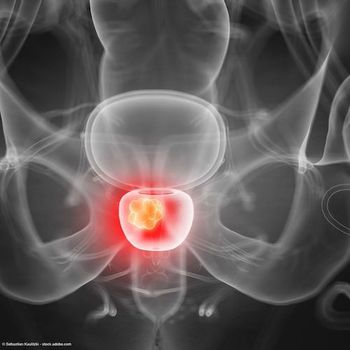
BPH experts discuss care pathways, patient education
"An educated patient is one that's always going to want to be more involved in trying to make themselves better; they're going to be an empowered patient,” says Thomas J. Mueller, MD.
Treatment of benign prostatic hyperplasia (BPH) should encompass quick and efficient navigation through care pathways as well as patient education, according to a panel discussion at the 2023 LUGPA Annual Meeting in Orlando, Florida.1
The discussion, “Good, Bad and Ugly of New BPH Treatments,” was moderated by Gregg R. Eure, MD, FACS, of Urology of Virginia. The panelists included Arpeet Shah, MD, of Associated Urological Specialists in Homewood, Illinois, Kevin C. Zorn, MD, of BPH Canada in Montreal, and Thomas J. Mueller, MD, of New Jersey Urology in Sewell.
To begin the discussion, Shah discussed his practice’s pathway for treating patients with BPH.
“The notable part of the first part of our pathway…is if you have an [International Prostate Symptom Score] of 8 or above, we are recommending some sort of objective testing for bladder health and prostate health,” Shah said. In these patients, UroCuff testing is typically performed, as well as potentially a cystoscopy and transrectal ultrasound. Medical therapy is offered at this point, according to Shah.
Associated Urological Specialists offers a wide variety of surgical treatments for BPH.
“We wanted to keep things pretty broad for surgical therapy. We have a lot of great urologists in our practice, and we wanted to give them the flexibility to do the procedures they feel comfortable with, with some restrictions. But that's why you have this long list of surgeries that are available,” Shah said.
Shah also emphasized the importance of monitoring patients with BPH.
“Whether you're observing your BPH, you're on medical therapy, or you've had surgical therapy, you're getting at least annual re-checks using the UroCuff to test for objective measures of bladder and prostate health. We want to catch the people who are on observation who need therapy, we want to catch the people who are failing medical therapy,” Shah said.
Shah explained that advanced practice providers (APPs) are a key part of being able to see and follow patients quickly, noting that his practice has medical assistants who have training to perform UroCuff testing.
Eure echoed Shah’s emphasis on speed and efficiency in moving men through the care pathway, and said APPs also play an important role in his practice. He stressed the importance of collecting as much data for the patient as possible.
“We’ve found that patients really respond to data,” Eure said.
“An educated patient is one that's always going to want to be more involved in trying to make themselves better; they're going to be an empowered patient,” Mueller added.
The panel also talked about patient education regarding prostate and bladder health. Shah said he compares the bladder to the heart.
“I think our patients are familiar with the heart, and so I often use the heart analogy. The heart’s a muscle, the bladder’s a muscle, they both squeeze. [I link] retention [with] heart attack and a lot of procedures to getting a cardiac stent. [I also link] intervening early in the importance of the fact that when you have a heart attack, that heart muscle is damaged forever. It’s the same thing with the bladder; it’s damaged over time by the prostate, and early intervention in those situations is really important,” Shah said.
In the panel’s concluding remarks, Mueller discussed the importance of patient safety.
“Just because we can do it doesn't mean it's necessarily good for the patient,” he said.
For his final though, Shah highlighted the shared decision-making process with patients.
“You have to be pretty blunt and clear to the patient that some of these new technologies may not be as efficacious,” Shah said.
Zorn’s take-home message was to gather as much data on patients as possible.
Reference
1. Eure GR, Mueller TJ, Shah A, Zorn KC. Good, bad and ugly of new BPH treatments. Presented at: 2023 LUGPA Annual Meeting; November 2-4, 2023; Lake Buena Vista, FL. Accessed November 3, 2023.
Newsletter
Stay current with the latest urology news and practice-changing insights — sign up now for the essential updates every urologist needs.




















